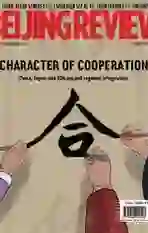Poverty Alleviation Success Not to Be Demeaned
2020-12-14ByLanXinzhen
By Lan Xinzhen
On November 23, officials in Guizhou Province, southwest China, officially declared the final nine severely impoverished counties were free from poverty. To date, all 832 areas across China that were previously identified as impoverished have been lifted out of poverty, marking the elimination of extreme poverty across the country.
Some Western media, however, have cast doubts on the veracity of this announcement. They are seemingly unable or unwilling to believe that Chinas elderly, weak, disabled and underprivileged and other vulnerable groups, which exist in every country, have been able to climb out of poverty. Some Western media have even hinted at the idea that these impoverished people may have been declared poverty-free while still struggling in poverty.
These insinuations are groundless and irresponsible.
The building of a moderately prosperous society in all respects by 2021 has been a goal of the Communist Party of China (CPC) and the Chinese Government that has necessarily included the nationwide elimination of poverty. At the conference of the CPC Central Committee on poverty alleviation and development in 2015, President Xi Jinping called on the whole Chinese nation to vigorously devote itself to the fight against poverty. At that time, China was home to more than 70 million people living in poverty in rural areas, including more than 40 million people who were unable to work due to disability or illness.
Since then, the Chinese Government has devised targeted poverty alleviation models, such as registering poverty-stricken households and designating officials to assist targeted individuals or households. In rural areas that have environment conducive to development, localized industries that are suited to the strengths of these local environment have been developed as a means to reduce poverty. In rural areas with unfavorable environmental conditions, local governments are working in partnership with governments and businesses in economically developed regions to help rural populations travel to these developed areas to find work and earn a living. Rural populations living in inhospitable regions have also been able to move to more hospitable regions with the help of government financial support and job offers. Central and local governments have also been better assisting those unable to work by adjusting budgets to bring them into the system that provides allowances for daily subsistence.
According to statistics from the State Council Leading Group Office of Poverty Alleviation and Development, around 43 million people have been brought under the umbrella of the subsistence allowance scheme since 2015. Of these, 18 million are granted basic living allowances, 11 million enjoy both this allowance and a special subsidy for disabled people with living difficulties, and 14 million enjoy the basic allowance as well as a subsidy for those living with severe disability.
Supported by the subsistence allowance system for rural residents, as well as other poverty alleviation policies, these underprivileged people now have a per-capita monthly allowance of 487 yuan ($73.8). In addition to having enough food and clothing, vulnerable individuals now have access to education, healthcare and housing.
Its understandable that a lack of information may lead some Western media to be suspicious of Chinas poverty alleviation feats. After all, applying their own countrys poverty alleviation experiences to the Chinese situation could easily lead them to think China is unable to lift its weak, elderly and disabled citizens out of poverty, just as their own countries have been.
Additionally, given Chinas population of 1.4 billion people, even a tiny proportion living in poverty still amounts to a large population by Western country standards.
These Western media outlets continue to express their doubts in order to denigrate China. Some anti-China media know little about China and have little contact with Chinese Government officials. The fact that many of these individuals have never even been to China does not prevent them from discrediting China for political reasons. However, if Western media is willing to dig deeper into the facts of Chinas poverty alleviation story, their doubts will begin to waver.
Chinas lifting of over 600 million people out of poverty between 1981 and 2008 is not only a fact widely recognized by the international community, but an achievement totally unprecedented in the history of human development.
Chinas decades of hard and devoted work has helped all those living in absolute poverty to rise out of it. This is a big achievement on not only a national scale but also a global scale as well. China has achieved its goal of poverty reduction under the United Nations 2030 Agenda for Sustainable Development 10 years ahead of time. No other country has been able to lift so many people out of poverty within such a short period.
Chinas successful experience can serve as a helpful example for many developing countries. For this reason and for the sake of global poverty reduction, the international community should see Chinas successful poverty reduction for what it is, rather than being misled by politically motivated defamation.
